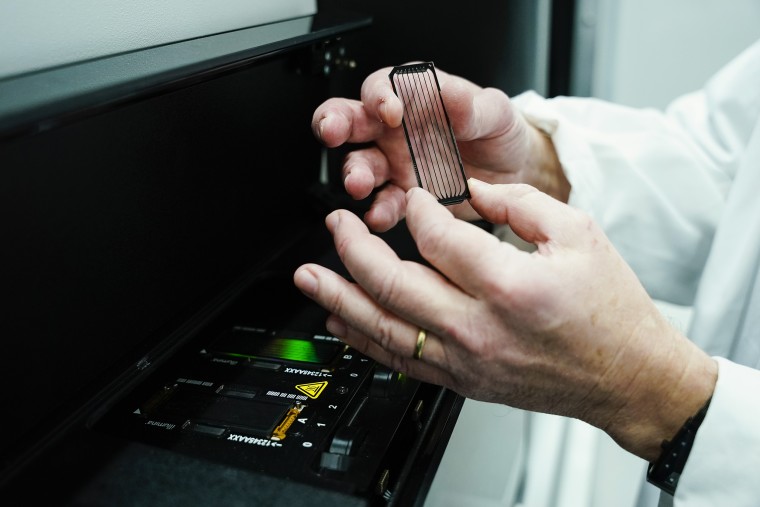Just like the year before, the pandemic was the silent uninvited guest at gatherings this past holiday season. As we now enter year three of dealing with Covid, it’s only human nature to wonder when we will return to normalcy. But if “normalcy” is defined as completely eradicating Covid-19, we’ll never be normal again, as the likelihood that we’ll face another variant like omicron or delta, not to mention a future coronavirus or another pathogen, is very real.
The world needs to figure out how to use new surveillance technologies to anticipate and limit the fallout from future pathogens.
Fortunately, we can still “win” against this pandemic and against those which follow; we can ensure that the next outbreak is better contained at the onset so that we can live our lives in a more normal manner. But all of us must become laser-focused on staying one step ahead of an ever-mutating virus so that we can contain epidemics from morphing into pandemics.
Following the onset of the original Covid outbreak in 2019, then the deadly delta variant after the rollout of the vaccines, and now the outbreak of omicron, it is clear that we are still unprepared and therefore vulnerable to future pathogenic surprises. And the threat isn’t just the potential for another Covid pandemic. A new more virulent flu strain, the sudden spread of antimicrobial resistance rendering standard medicines ineffective, or even a human-made bio-terrorist attack are all looming dangers.
Going forward, the world needs to figure out how to use new surveillance technologies to anticipate and limit the fallout from future pathogens. The Covid crisis has demonstrated the great potential of genetic sequencing for detecting threats in this way. Since January 2020, over 6.9 million coronavirus sequence submissions have been shared online. This global collaboration fueled the development of mRNA vaccines in record time, as well as provided valuable insight into how this coronavirus has mutated, enabling governments to adjust safety protocols depending on each variant’s unique characteristics.
But what the world really requires is a full-fledged automated genomic sequencing network — a Global Pathogen Surveillance Network — focused on detecting emerging outbreaks of known dangerous pathogens, such as anthrax or Ebola, or a new pathogen, like the next coronavirus. For this Global Pathogen Surveillance Network to materialize, we need to regularly sequence samples from populations all around the world, while also maintaining their privacy. (My company, like others that make and sell genetic sequencing systems, would likely financially benefit directly or indirectly from the creation of such a system.)
The genome sequencing must also be done in an equitable manner, meaning that every country, including lower-income ones, must have a sizable percentage of its population accounted for. And we must include people from different races; otherwise, we risk developing drugs that are based upon – and therefore likely most effective for – only those of Caucasian descent.
Without such blanket genome sequencing in every part of the world, the threat of an epidemic morphing into a pandemic increases dramatically because no one is safe until everyone is safe.
Yet even in the United States, we have an assortment of states and local entities doing different types of sequencing with different levels of comprehensiveness. It’s a fact that no one entity is in charge, and no existing entity seems to be an immediately obvious candidate to do so.
For this reason, the U.S. can’t do it alone. Early in 2021, I proposed an international Bio Force to track the growing variety of Covid mutations and monitor future threats in the form of pandemics, bioterrorism or antimicrobial resistance. This global entity can’t come from the public sector alone. We need a public-private partnership to engage in automated bio surveillance and then store, analyze and share the data received.
Private entities can reveal a surge of illness in a particular area through various input signals. For example, health care data on body temperatures in a defined area can be compiled by local public health agencies while genetic sequencing of wastewater can detect and identify unexpected pathogens in communities – and do so in real time. A public-private global group could harness data sources like these to offer a state-of-the art global biothreats detection service on a hyperlocal level via subscription to governments or other entities, with all of its sources having the advantage of being anonymized, allaying concerns about privacy.
Of course, winning against future biological threats also means supporting the creation of new vaccines and related drug discoveries. One example for other governments to emulate is the Biden administration’s proposed Advanced Research Projects Agency for Health, which works to advance breakthroughs in curing cancer, diabetes and neurological diseases.
But perhaps just as challenging as creating next generation vaccines is ensuring the equitable distribution of such cutting-edge treatment to people in lower-income countries. For this, the ongoing pandemic represents a painful reality check.
As just one example, the Financial Times notes that more Covid boosters have been “administered in high-income countries than all vaccine doses combined in the world’s lowest income countries.” Although some higher-income countries have helped deliver vaccines to lower-income ones, the move has been done in an ad-hoc manner and not at the scale that will be urgently needed for the next global health crisis.
Covid has exposed a massive and unaddressed international vulnerability to pandemics, but it also brought to the fore technologies like genetic sequencing and mRNA vaccines that can help counter those threats. We can’t prevent the next outbreak, but we can commit to making this the last pandemic. The question for 2022 and beyond is whether the key players on the international stage can find a way to deploy these innovations to make sure that the world doesn’t get surprised again.


